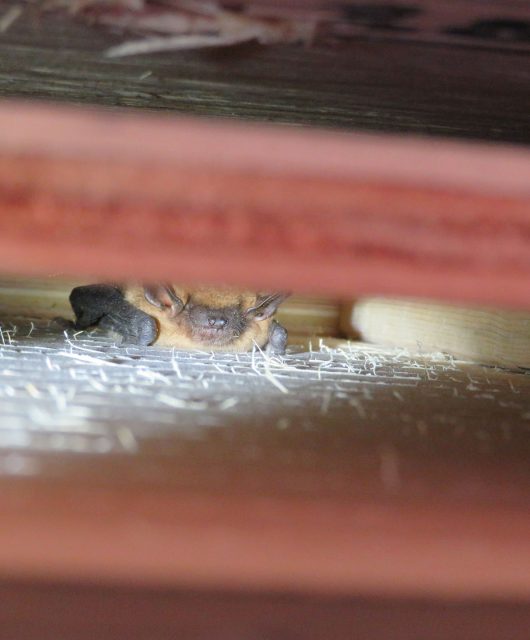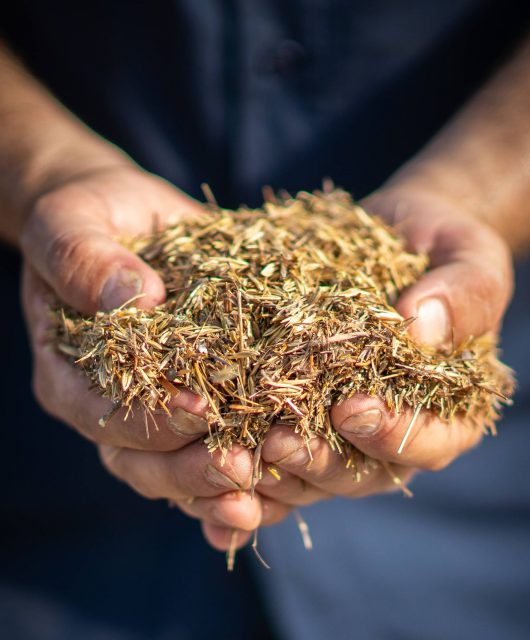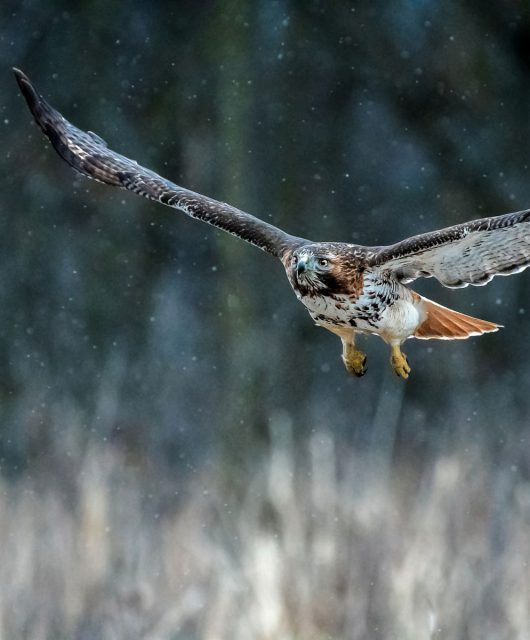Help to conserve wildlife during your construction project
Building a new home is an exciting project for many Canadians – but chances are your property is already home to a number of our wildlife friends. If you’re planning to build a house, it’s important to take steps to be a good neighbour to the existing species and habitat on your property.
Before Construction

A construction project often begins by tearing down existing structures or clearing away inconvenient habitat, which can disrupt or harm wildlife. In winter, species such as the Big Brown Bat may be overwintering in an empty building. These mammals may be unable to escape the building before it’s torn down, and if they do manage to leave, they may be unable to find an alternative hibernation site before freezing to death. In spring and summer, bird species such as the threatened Barn Swallow or endangered Chimney Swift are building nests in existing structures, or caring for newborn chicks that are too vulnerable to survive the destruction of their nests.
Before clearing your site for construction, inspect all buildings for wildlife that could be safely, humanely removed by professionals. Not only is this the kindest approach, it can also be a legal requirement. Canada’s Species at Risk Act and Migratory Birds Convention Act protect some of the species that can be harmed by construction and may require you to obtain a permit before starting your project.
During Construction

The noise and light from ongoing construction can disrupt species’ feeding or breeding behaviours, and the disruption of the land can divide large habitats into smaller ones, impacting species that rely on spacious habitat. An active construction site can also attract wildlife to an unsafe area. Make sure you don’t have any tempting food waste or scraps near the worksite. The construction crew should drain or block off any contaminated water sources, and they should ensure that wildlife can’t access bins, boxes, pipes, materials or piles of rubble.
After Construction

Once your new home is complete, why not make your property an oasis for wildlife. You can help to conserve our species and mitigate some of the harm caused by construction. Planting a pollinator-friendly garden, installing a bat box, providing a soggy spot for butterflies, offering nutrient-rich seed for birds, and building a brush pile are just a few ways you can make a difference.






14 comments
It would be helpful to add something about windows. Consider choosing window film or other measures that disocuorage birds from flying into them, espcailly if there is a lot of windows on the property. Easier to do when building rather than paying extra later.
Same goes for leaving gaps under breezeways and doorways. Ensure there are no ledges where they willl try to nest only to have you tear it down.
Hi Carly
Thank you for your comment! This is a great point. We also have another post about window collisions here: How to Prevent Birds from Colliding with Windows
I really enjoyed reading this! Thank you so much for sharing! Great tips!
this helped me a lot in making an essay!
Nicely crafted information. Its time to take measures to prevent wildlife and nature. Highly recommend that piece of content.
Some of the best information out there,
I have a question about sub-divisions and major development projects being built in and around our city. Every time I see a new development project (and there are many), I cringe at the thought of wildlife being displaced and loosing their home. Greenbelt projects in Ontario, Canada make me insane. Are construction companies required to remove and relocate wildlife? What rules do they have to follow? How can we ensure these companies follow the rules and regulations?
Keep up your great work…:).
Hello Dennis
Thank you for your question. Decisions are typically shared between municipal and provincial governments. This link explains the process for land use planning in Ontario: 11. Land use planning | The Ontario municipal councillor’s guide | ontario.ca: https://www.ontario.ca/document/ontario-municipal-councillors-guide/11-land-use-planning
The Canadian Wildlife Federation’s blog post offers a thought-provoking exploration of the impact of house construction on wildlife. It highlights the importance of striking a balance between human development and preserving natural habitats to protect wildlife populations. The article examines various ways in which house construction can disrupt ecosystems, including habitat loss, fragmentation, and increased human-wildlife interactions. It also provides insights and practical tips on how homeowners can minimize their impact on local wildlife, such as incorporating wildlife-friendly features into their property design and implementing responsible landscaping practices. By raising awareness about the potential consequences of house construction on wildlife, this article promotes a greater understanding of the need for sustainable and wildlife-conscious development practices. It serves as a reminder that our actions can play a vital role in safeguarding the natural world and maintaining a harmonious coexistence with wildlife.
who is the writer?
Chelsea Ferguson. The author bio is at the bottom of the post 🙂
that is really helpful
Nice to build a wildlife sanctuary with food and water included for all animals .
Those have no where to go can look for this big santuary with shelter and food and water provision for them.
Great tips! It’s so important to think about wildlife before, during, and after building. I didn’t realize construction lights could affect feeding or breeding—something I’ll definitely keep in mind. Love the idea of turning the finished space into a wildlife-friendly zone too!